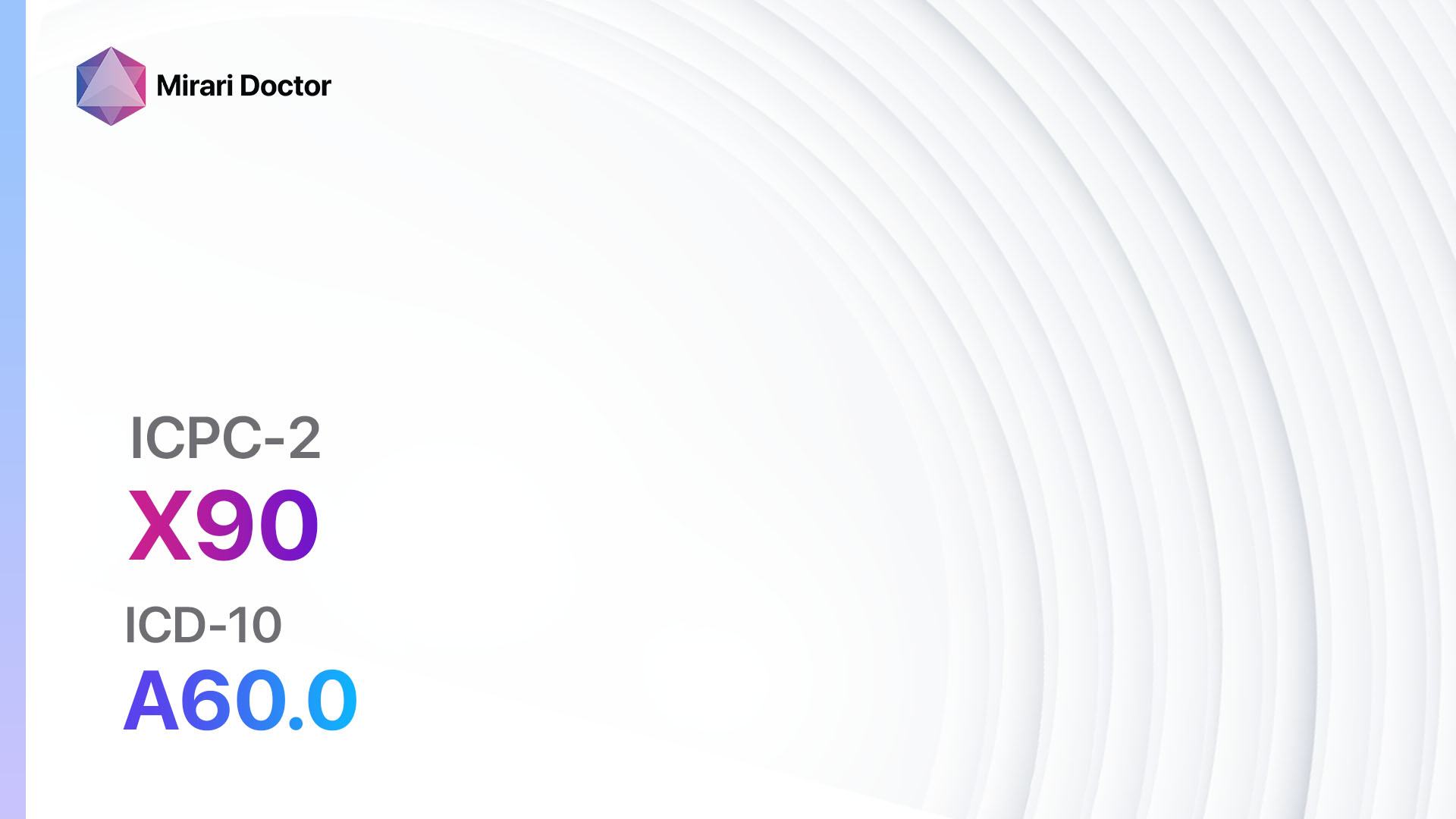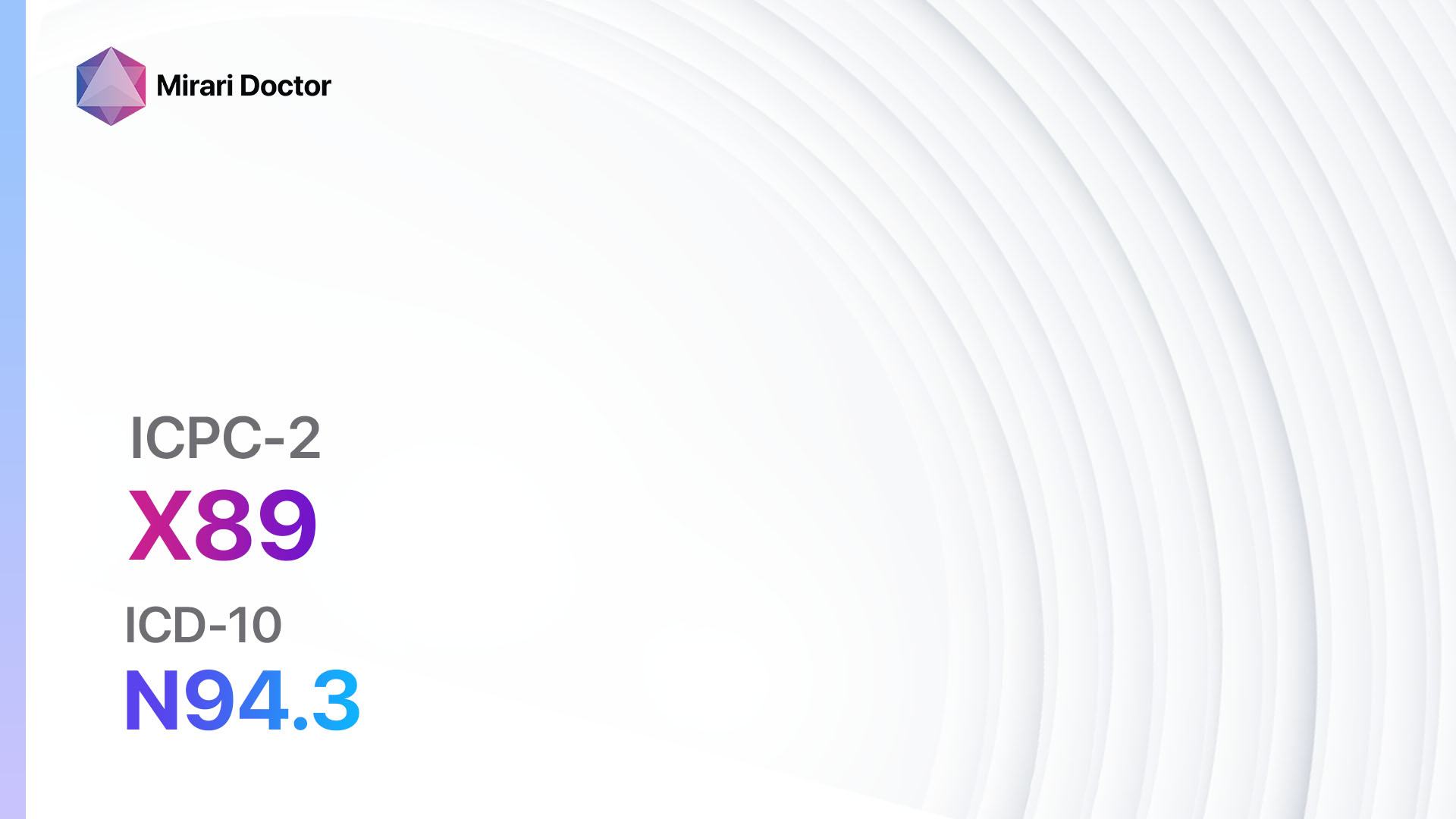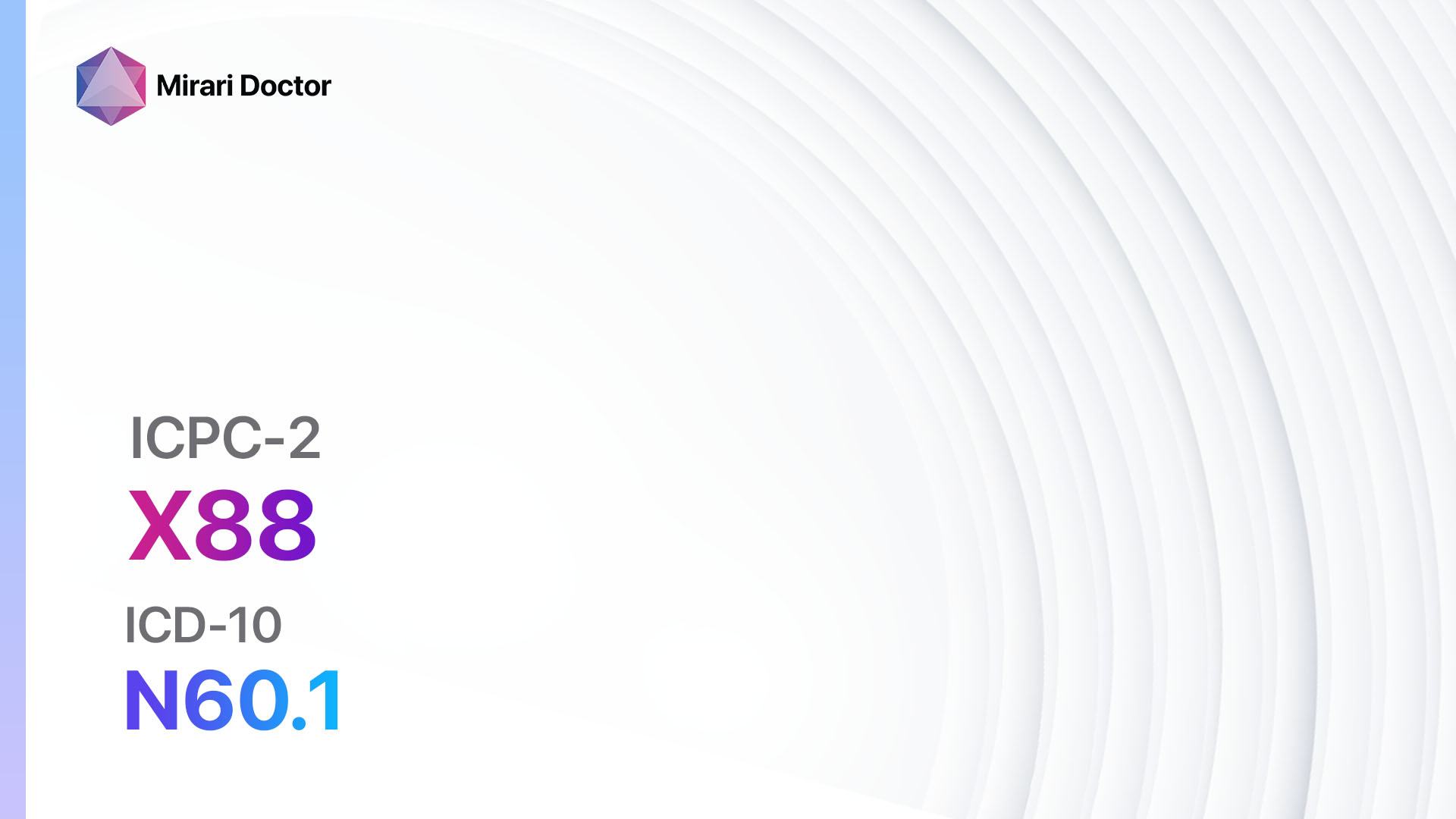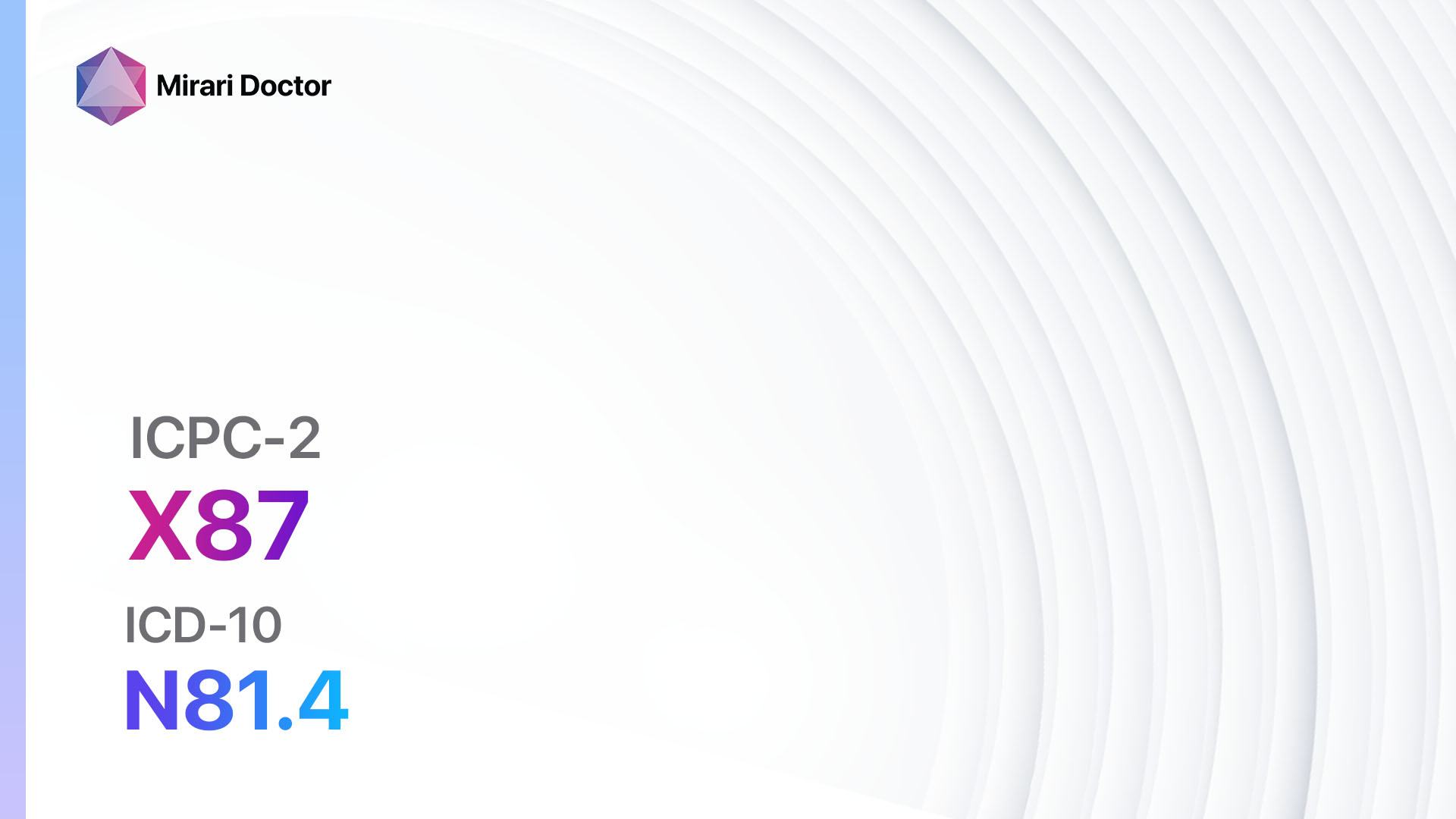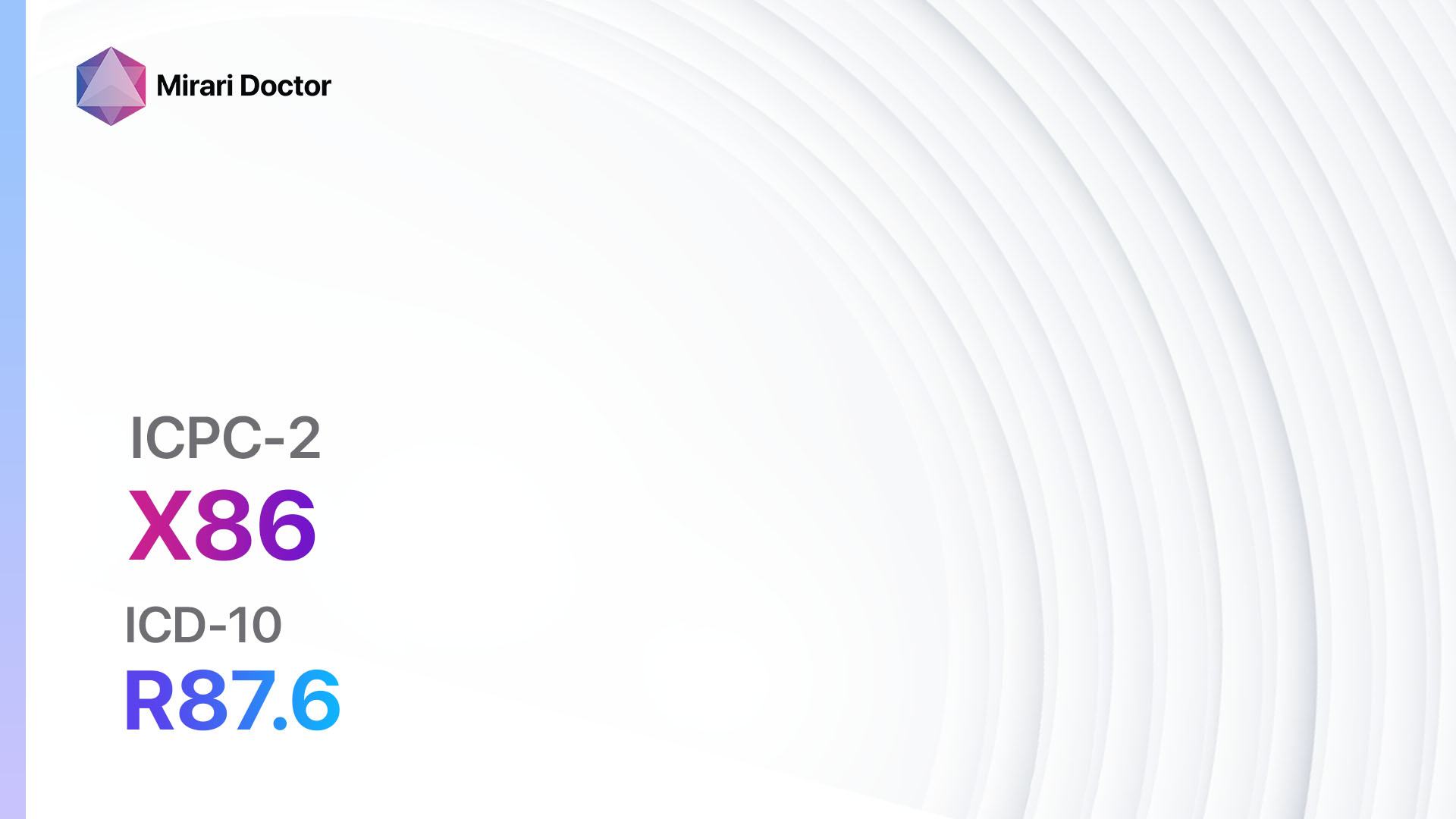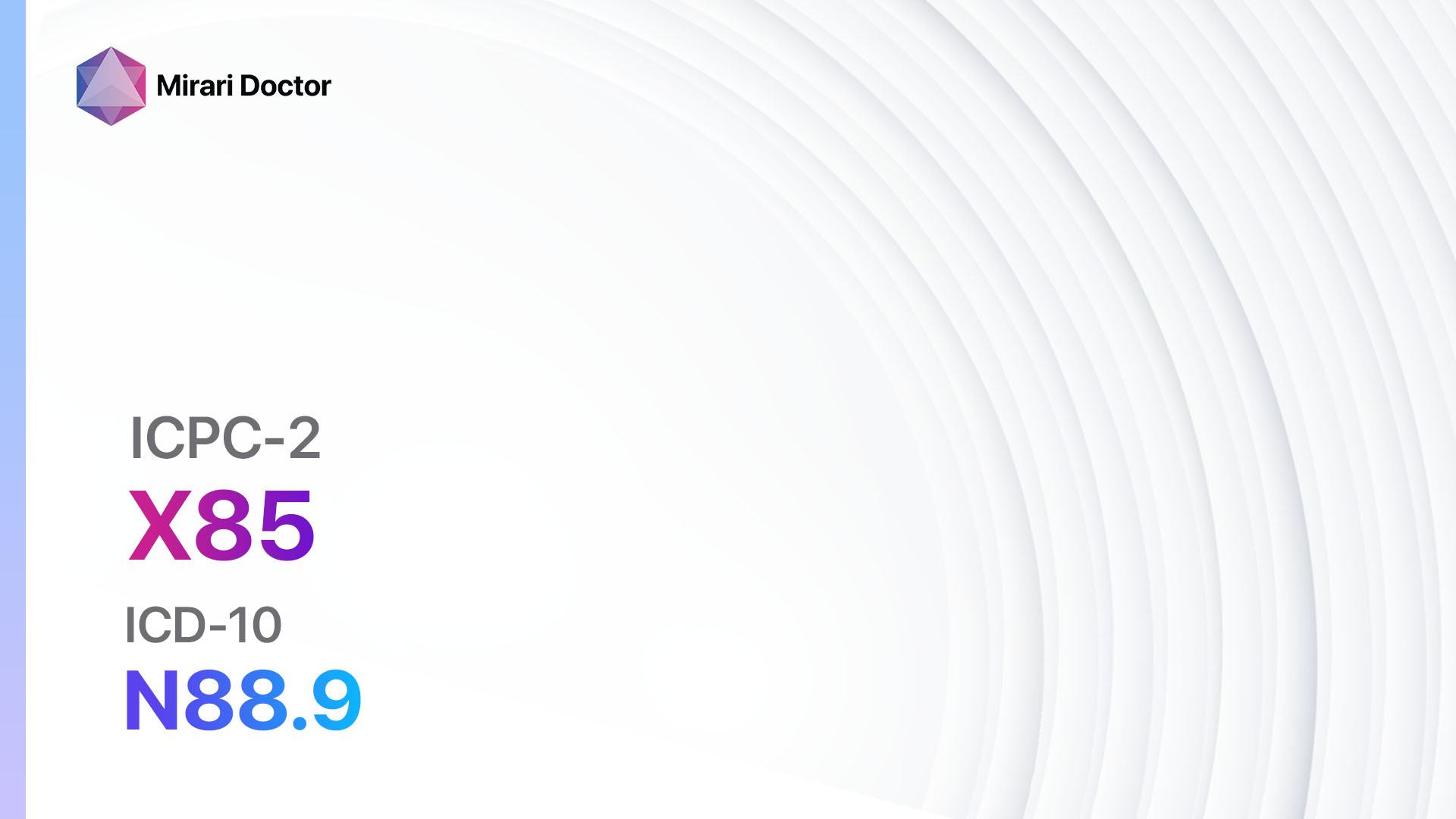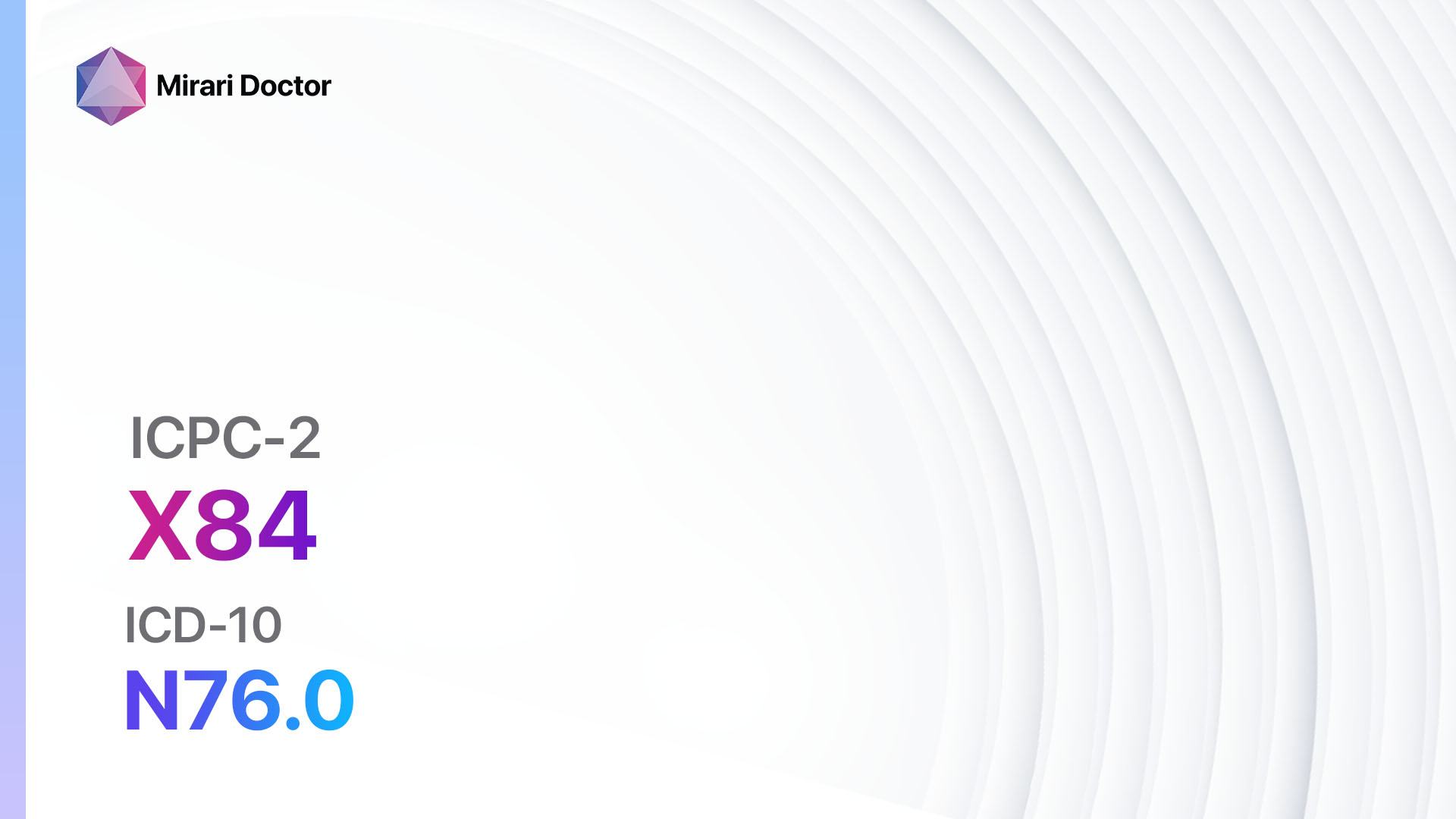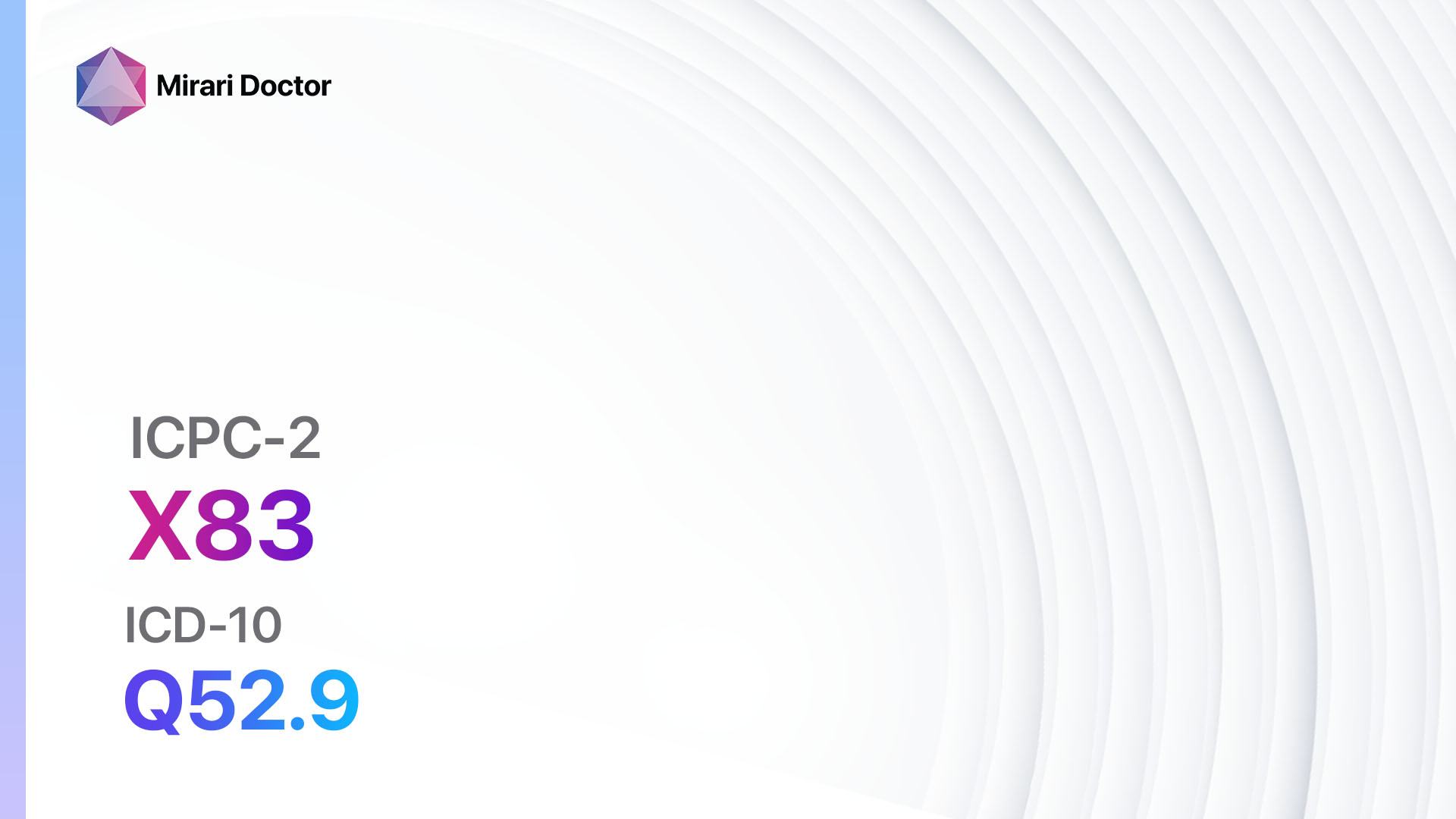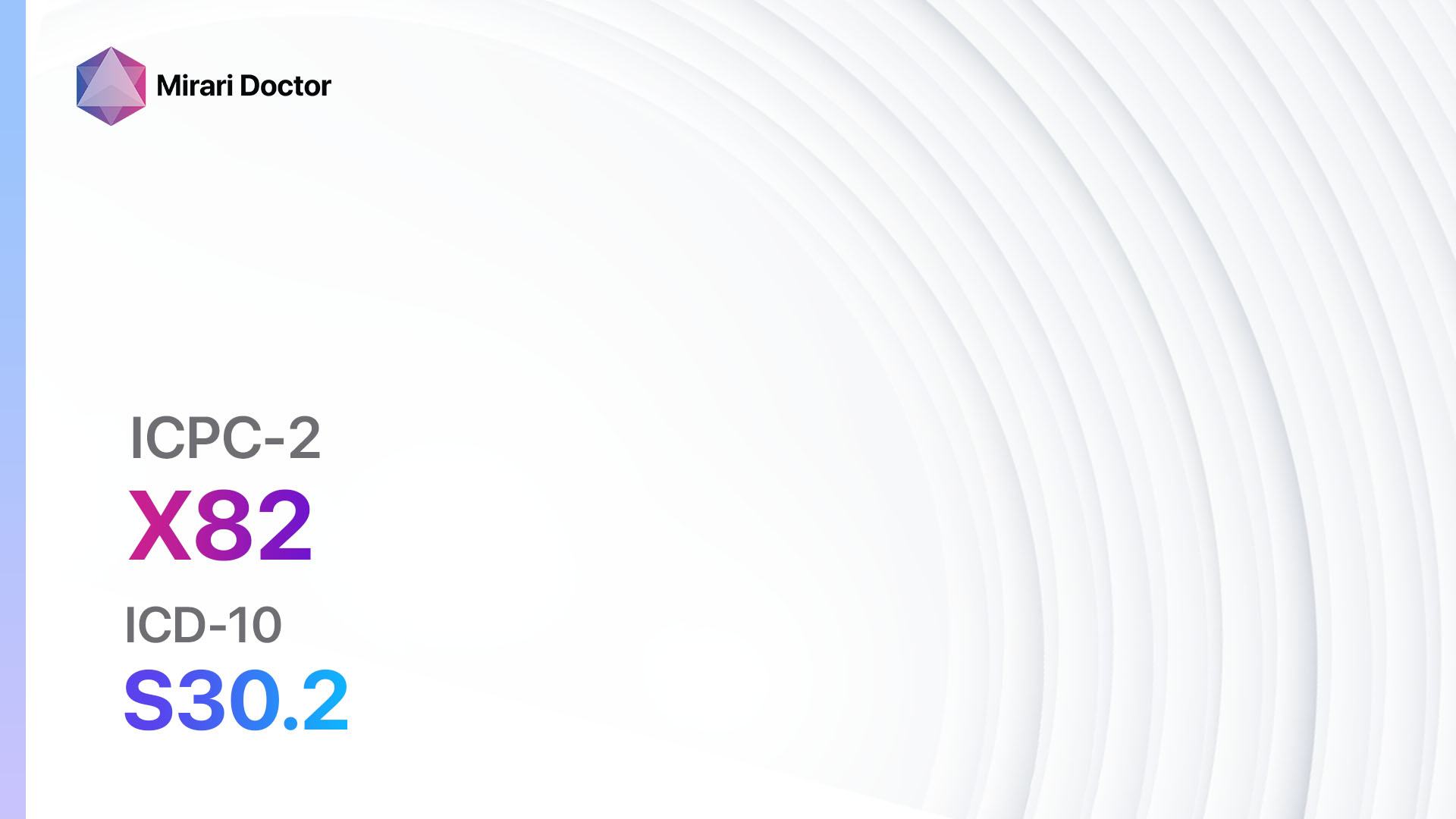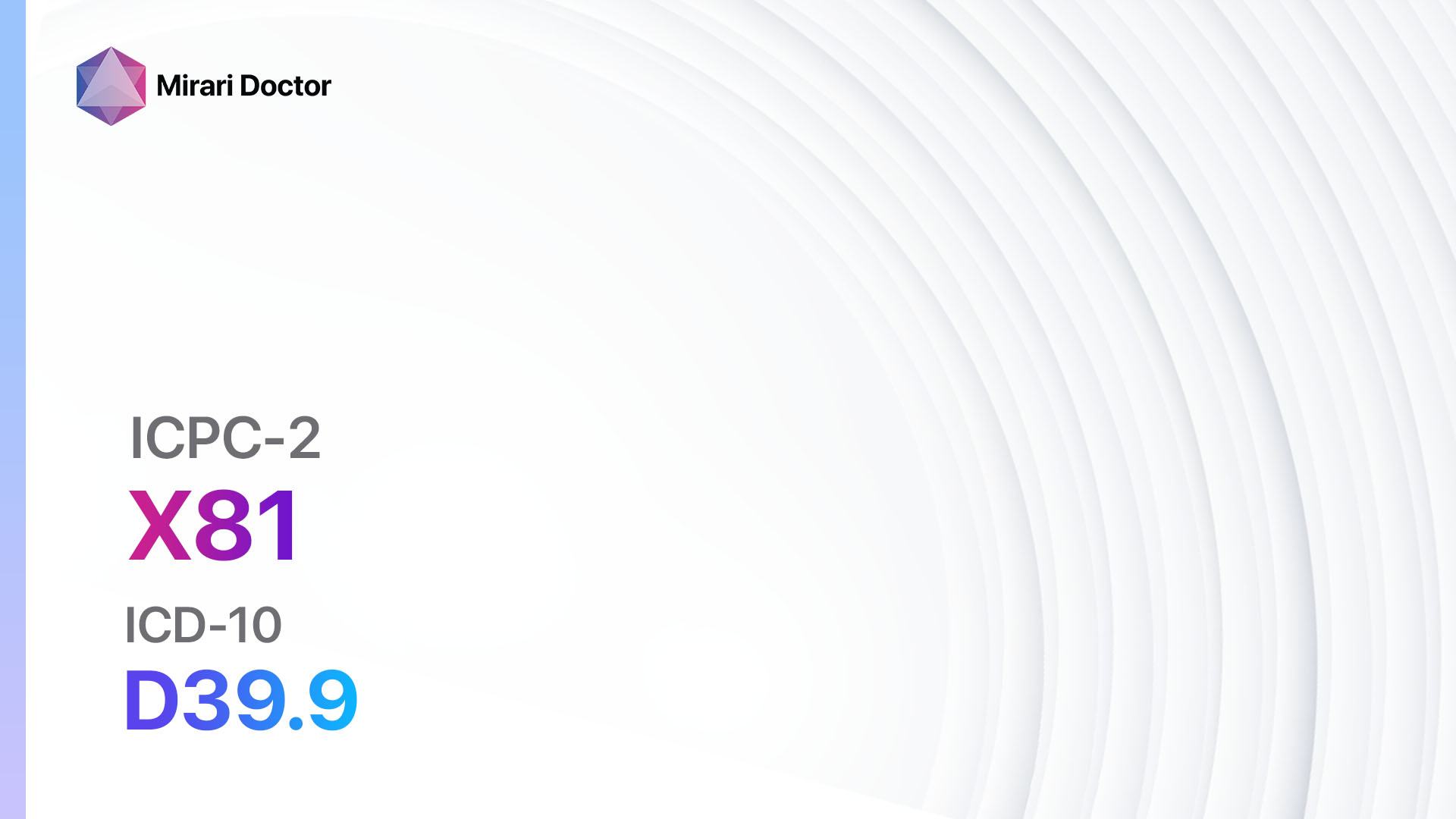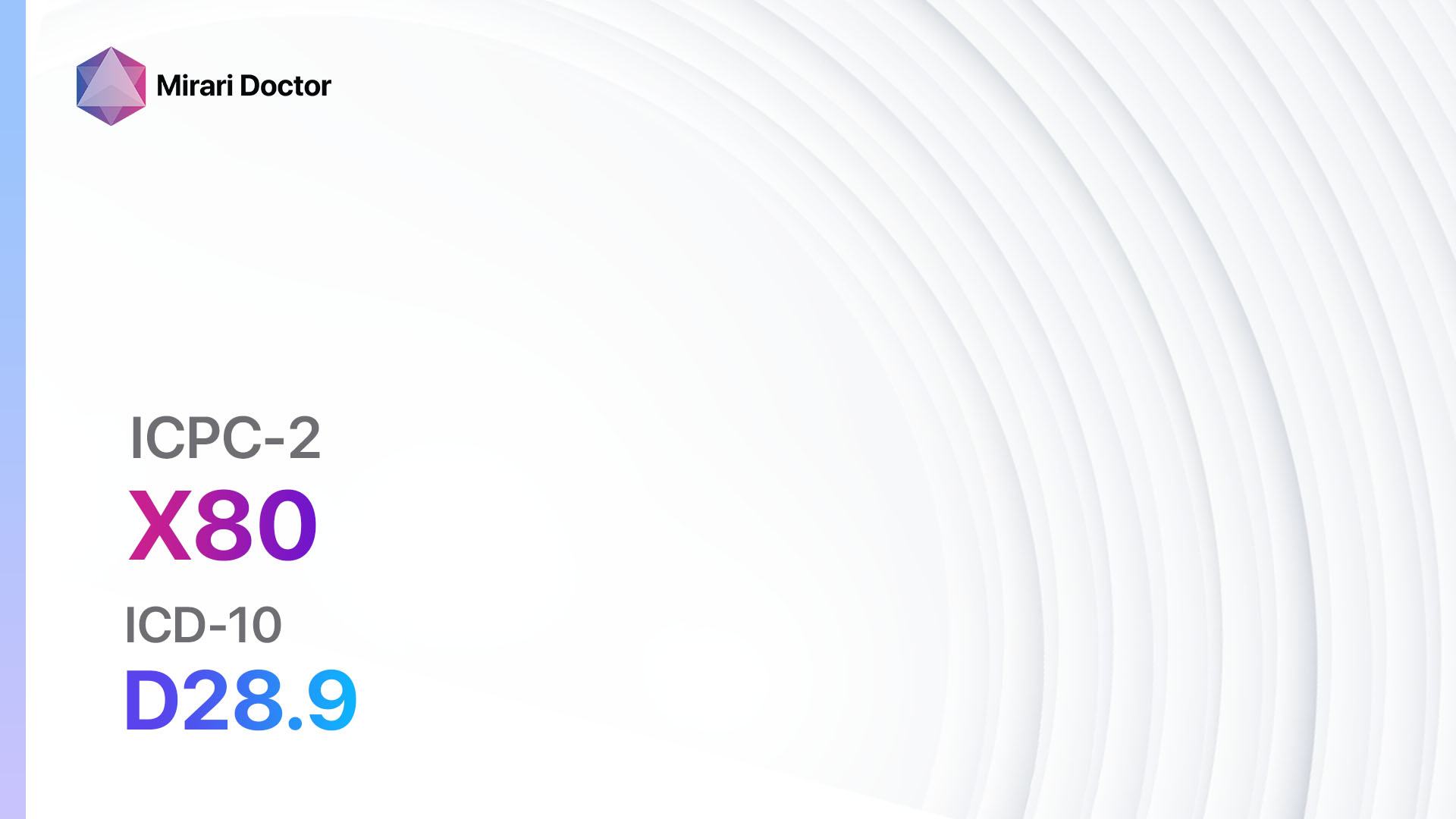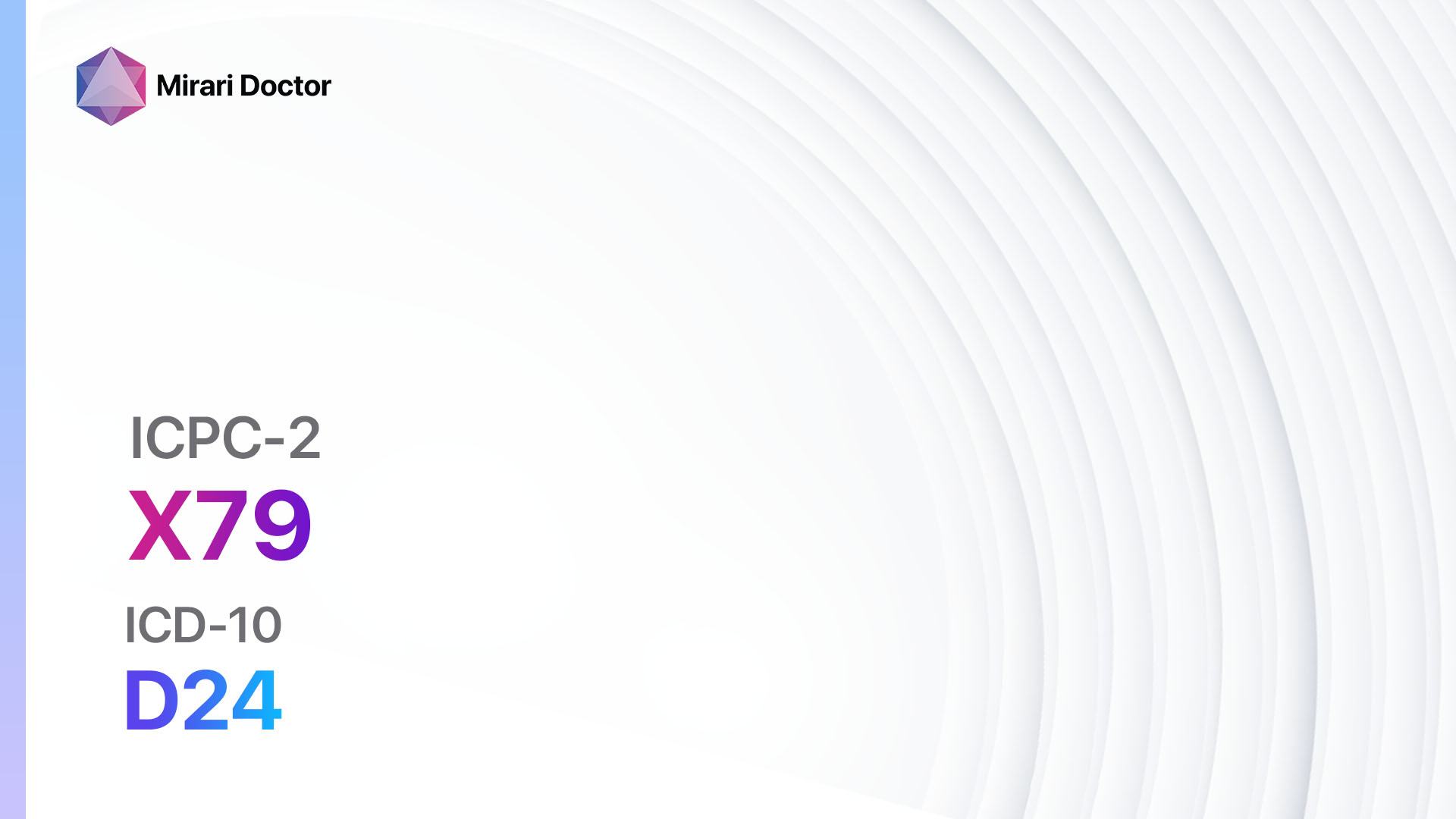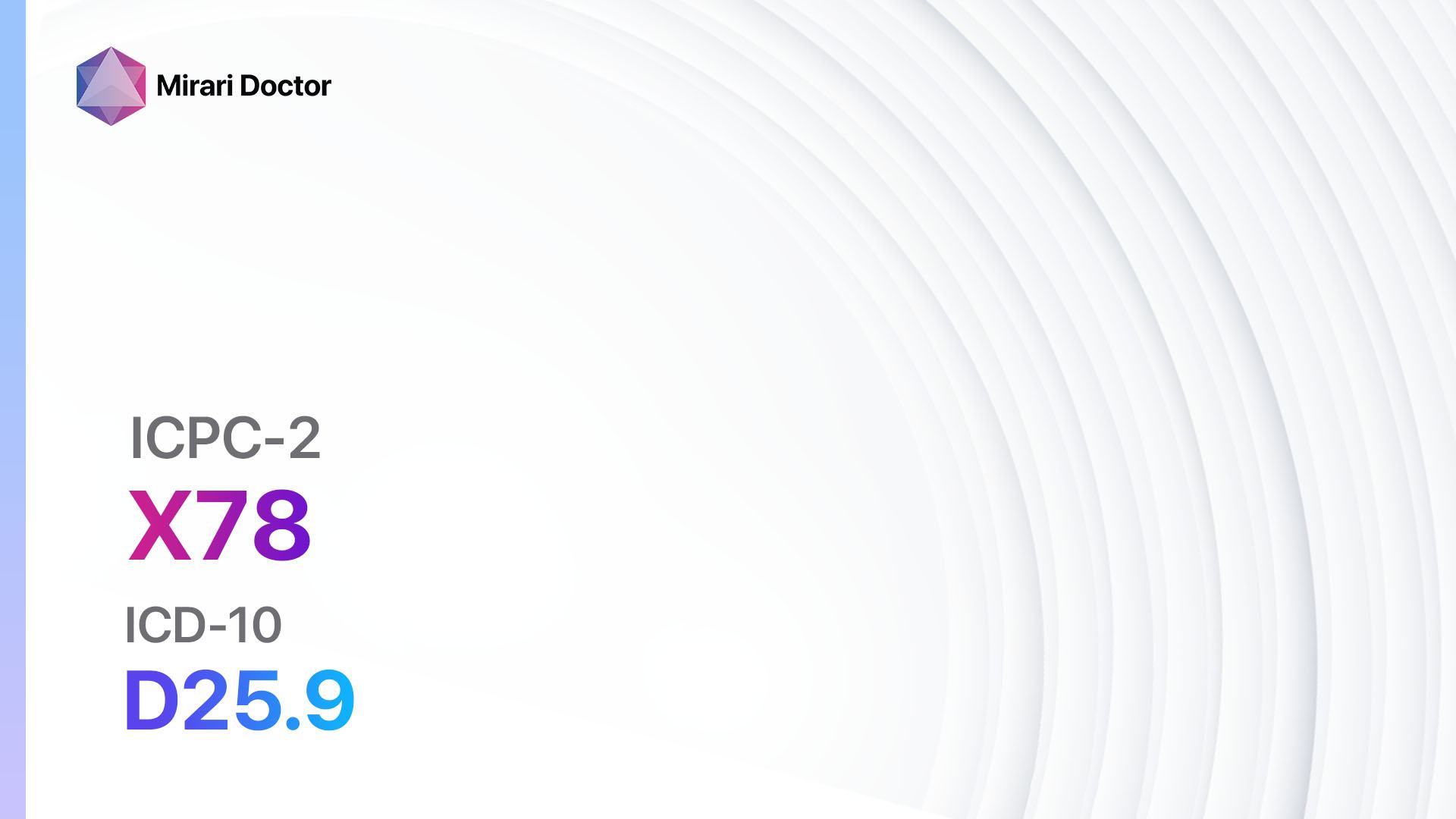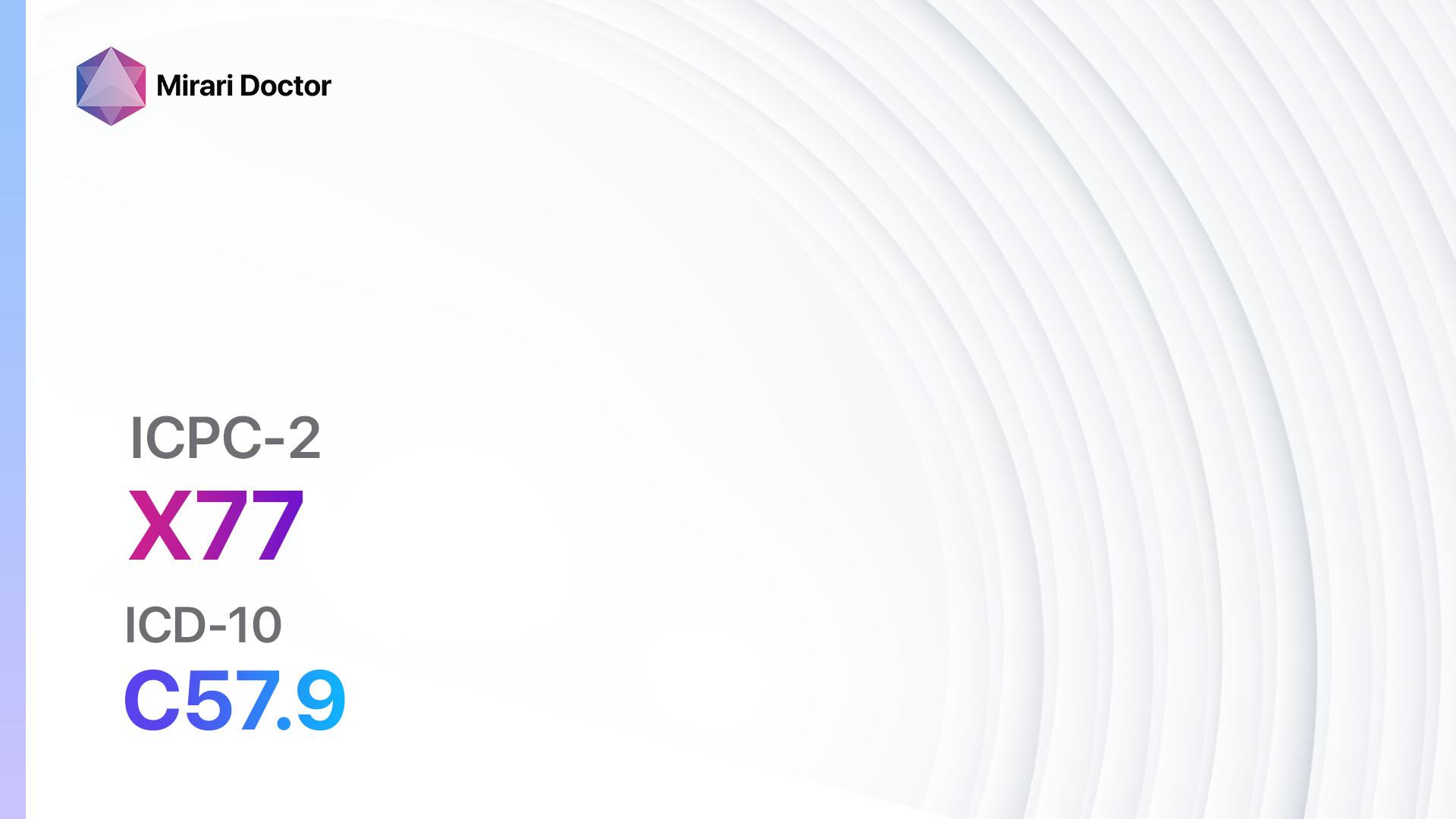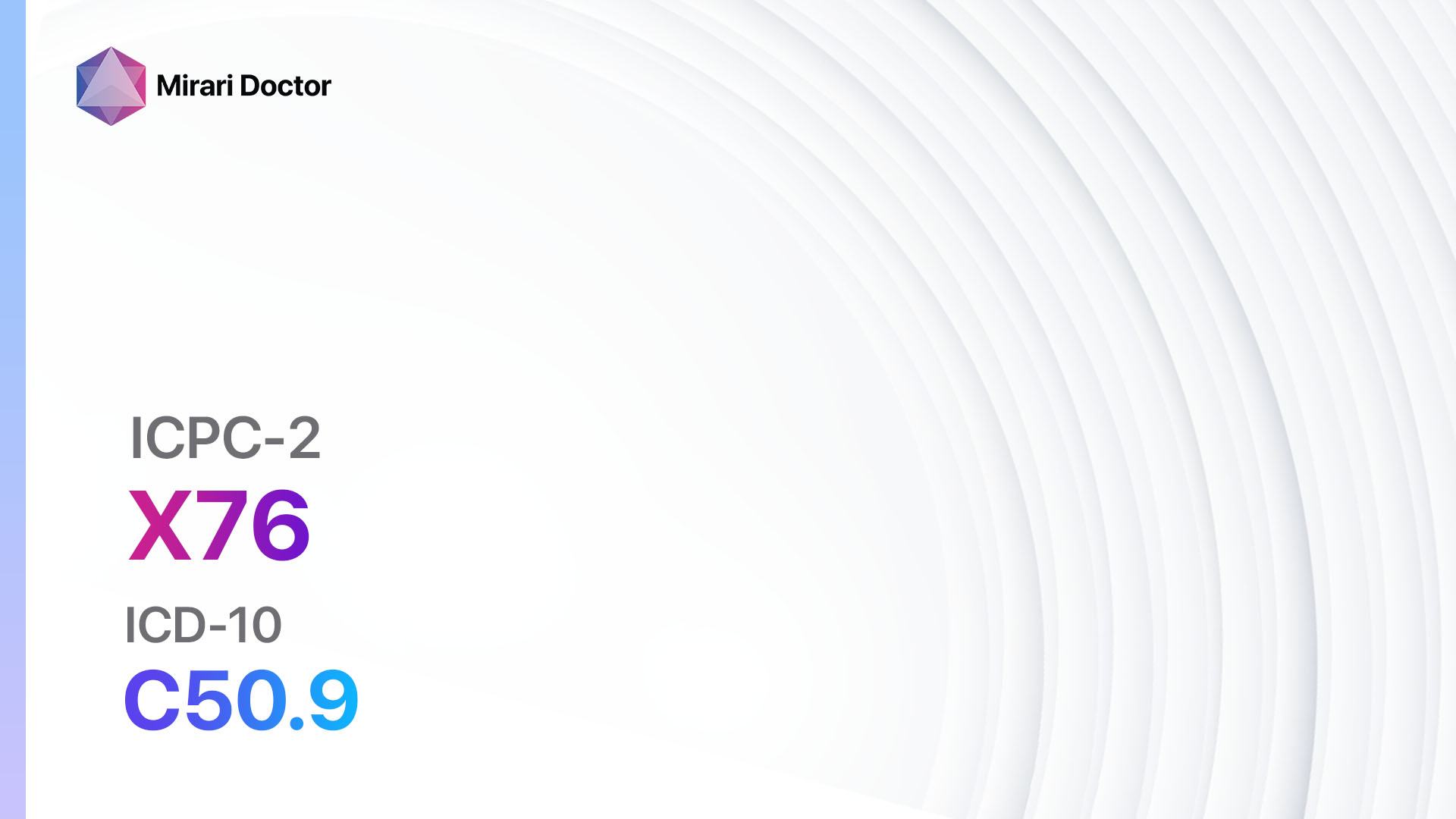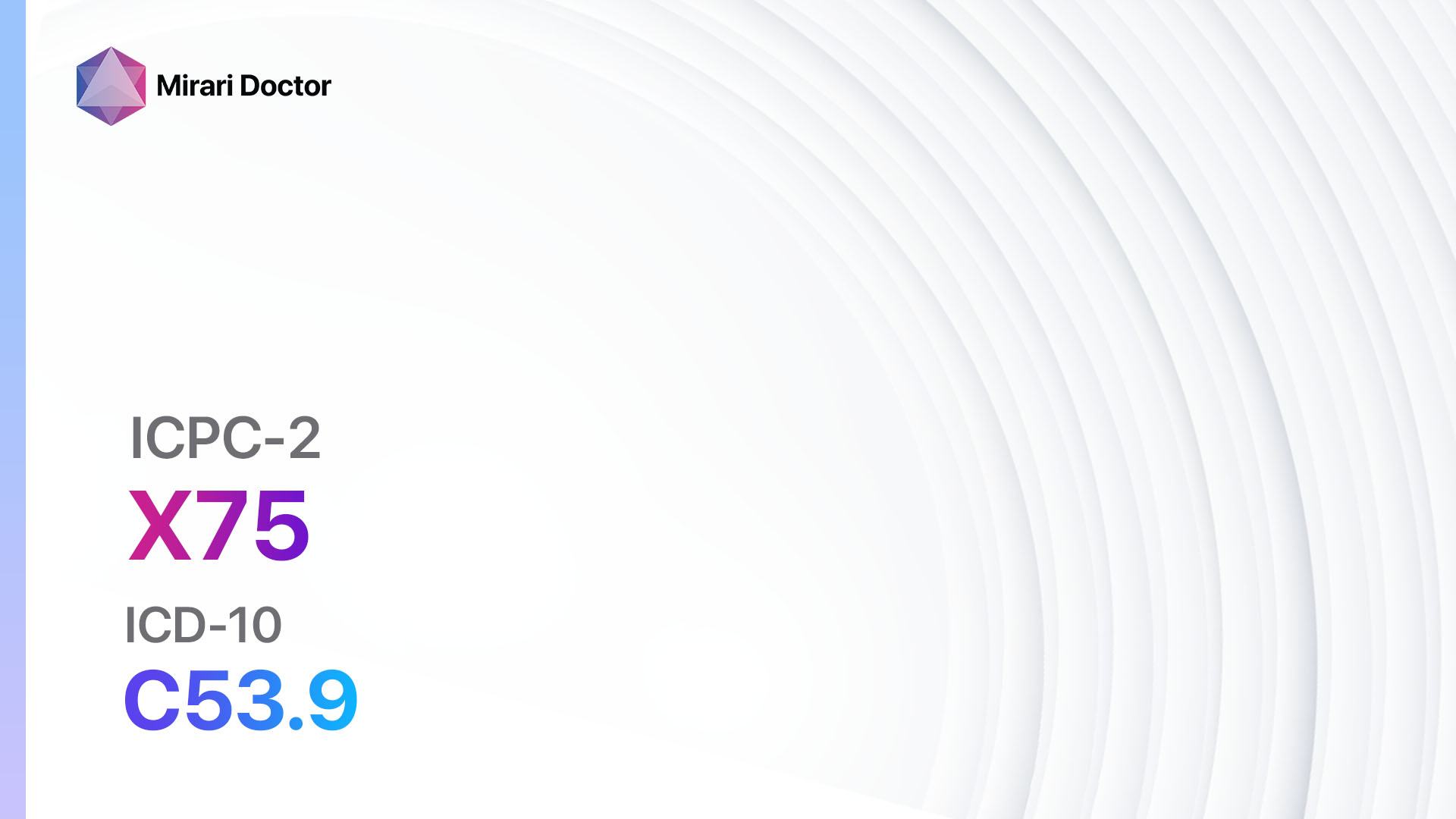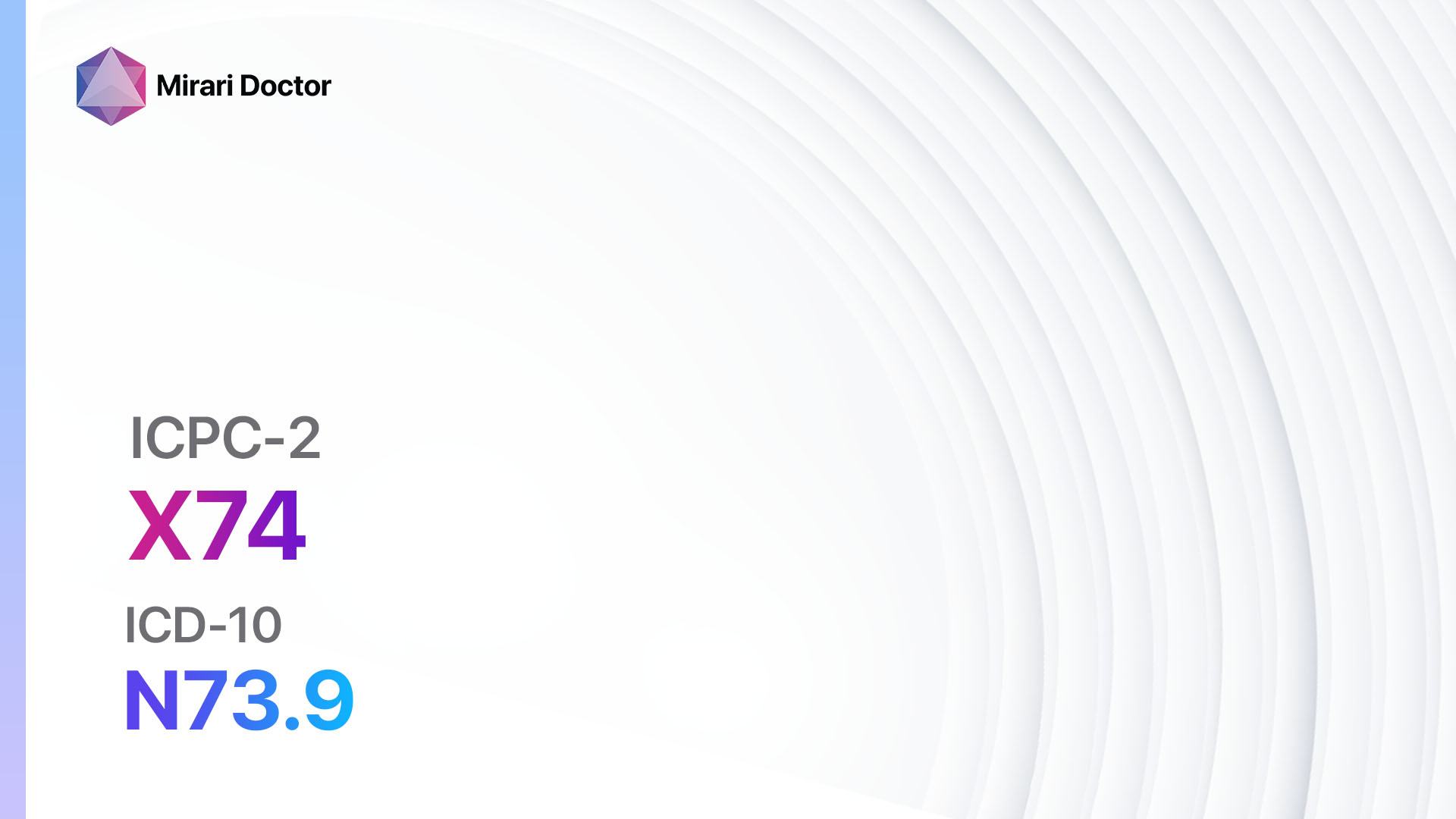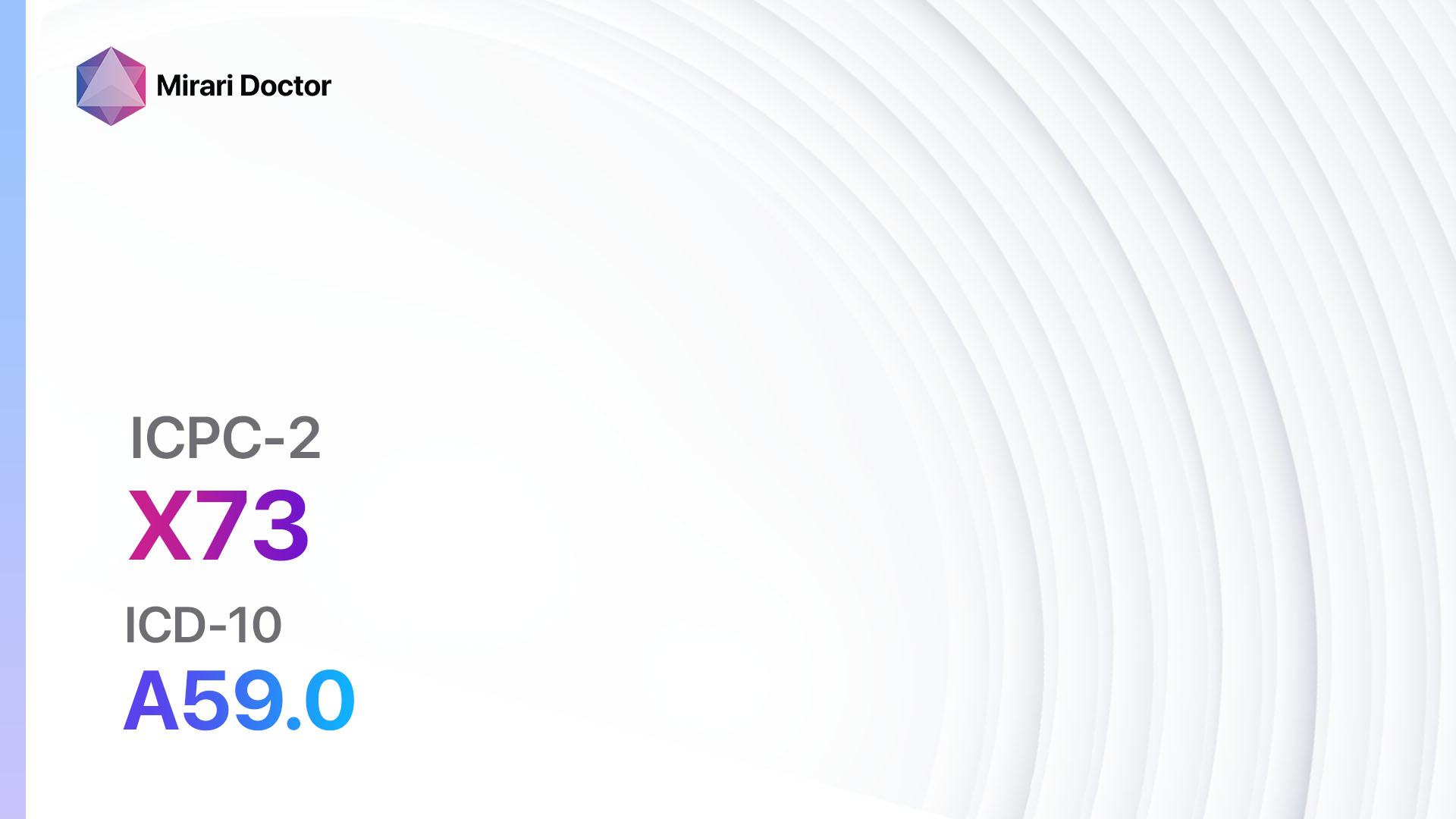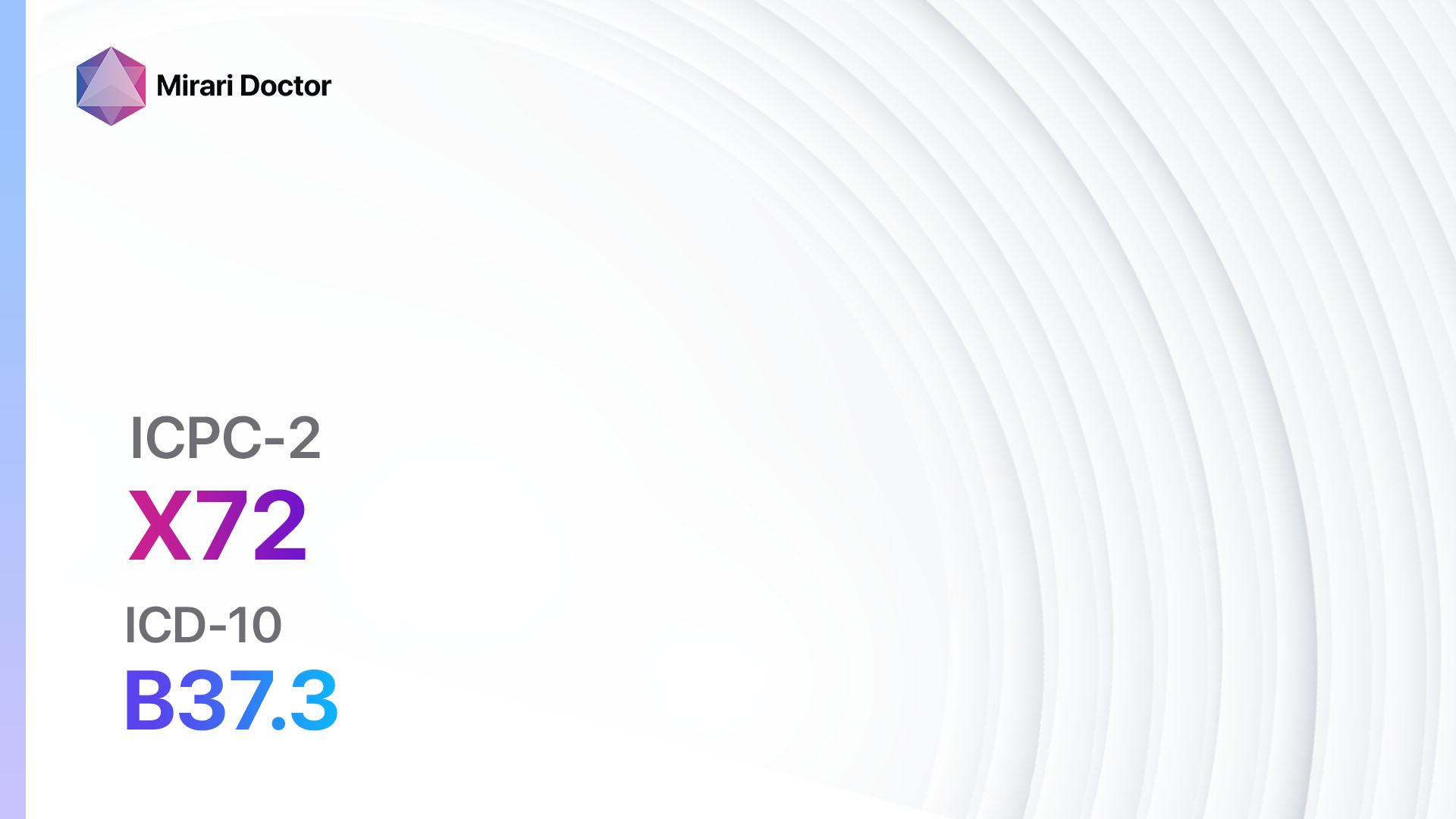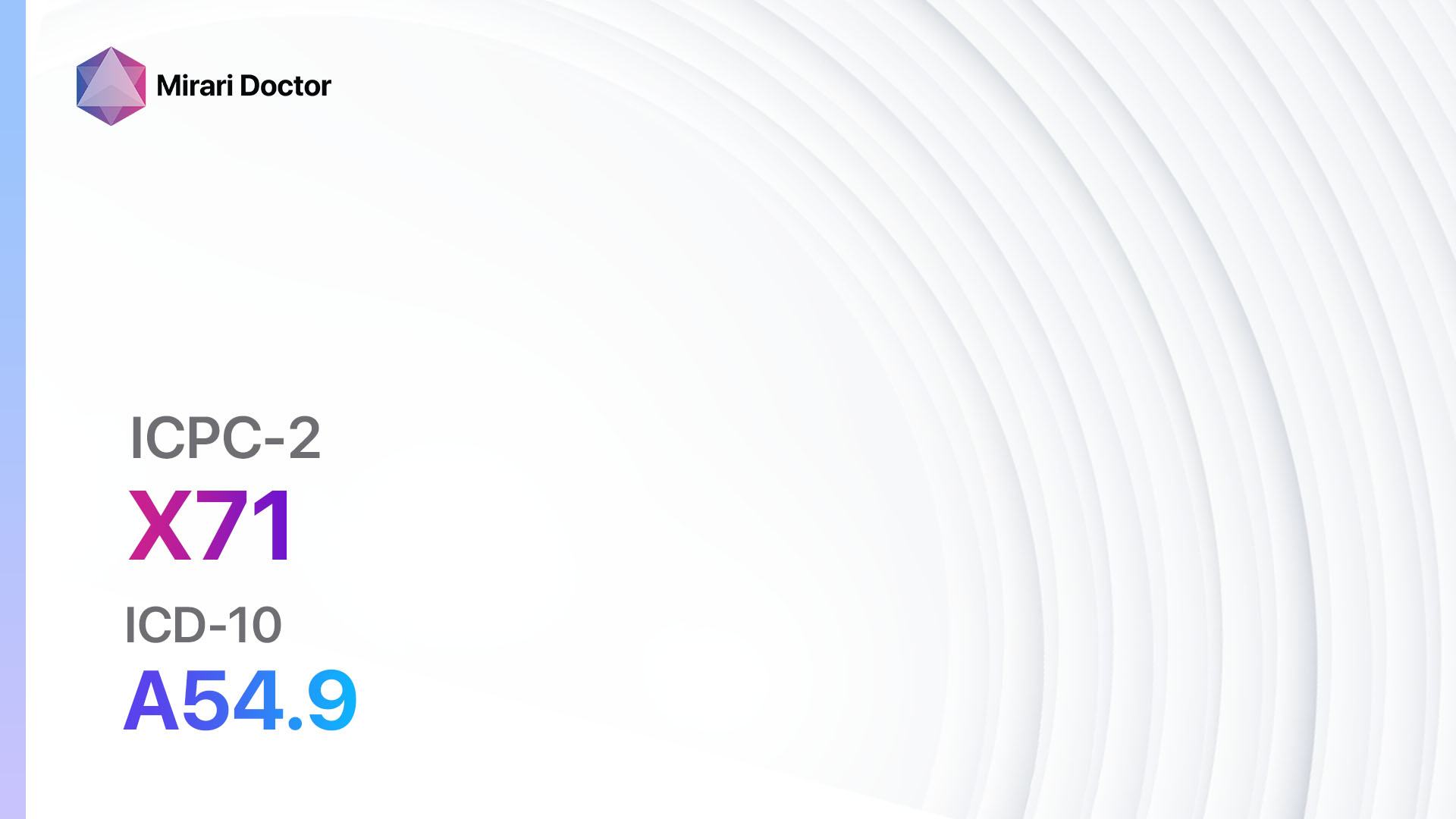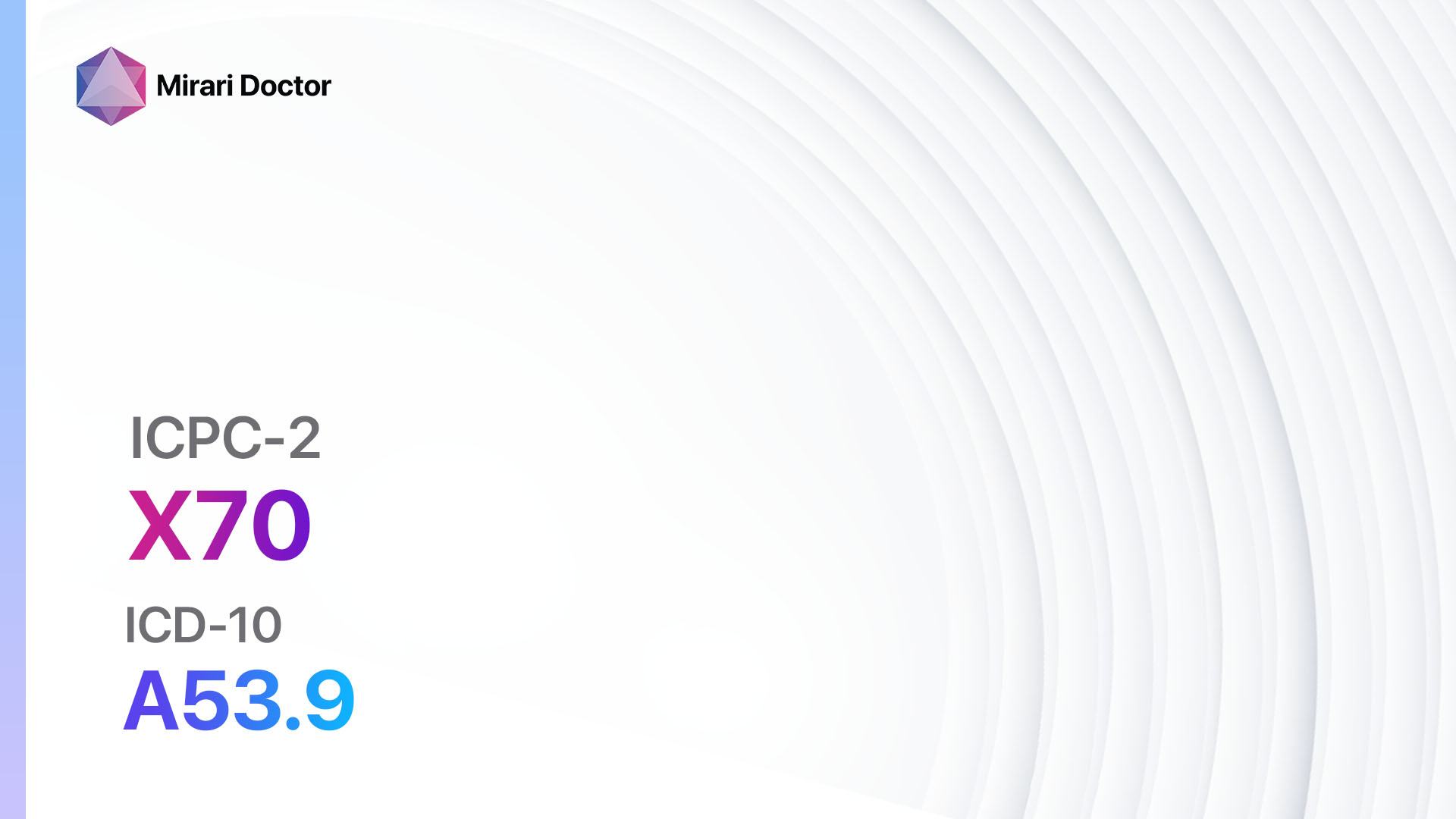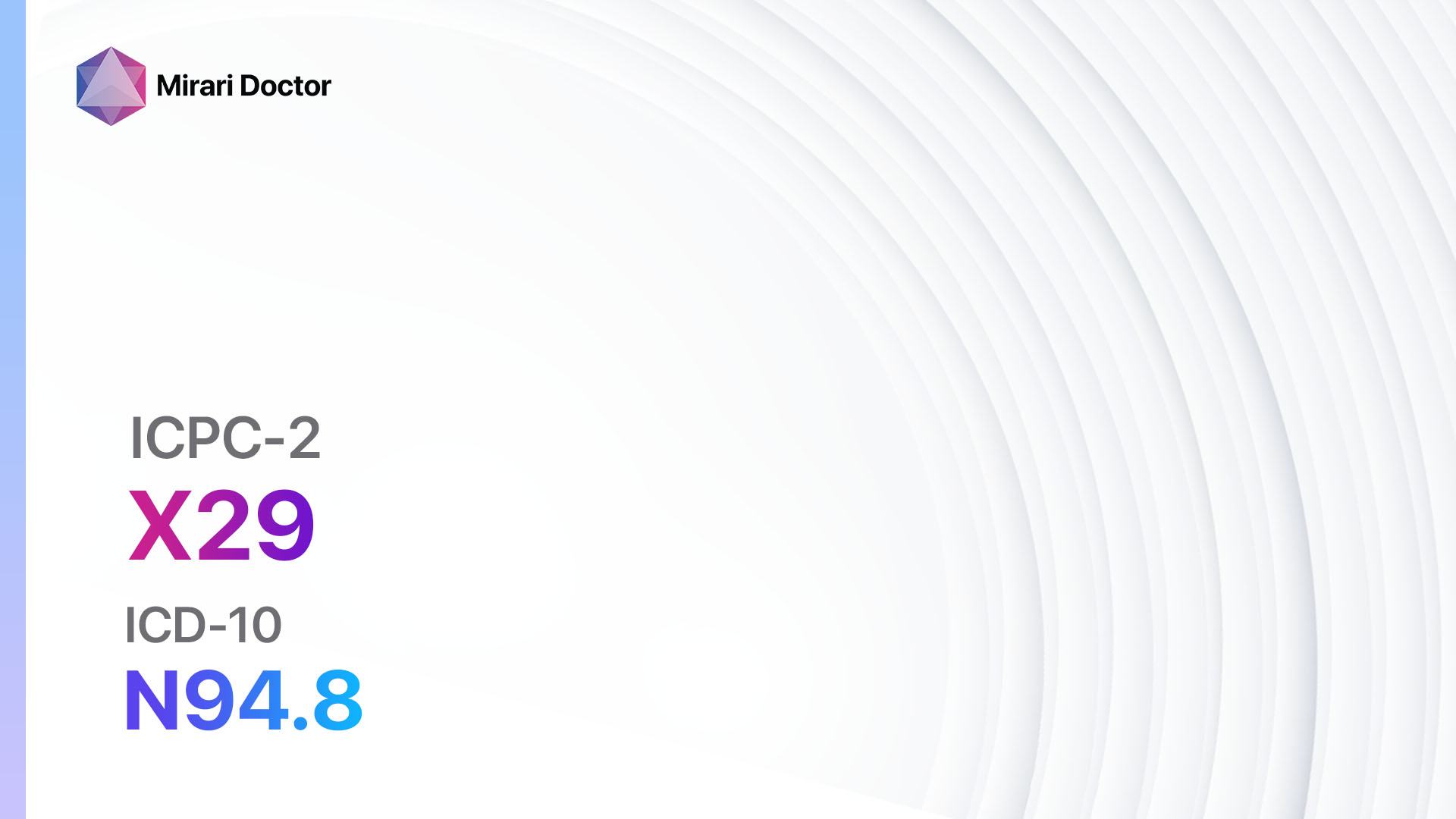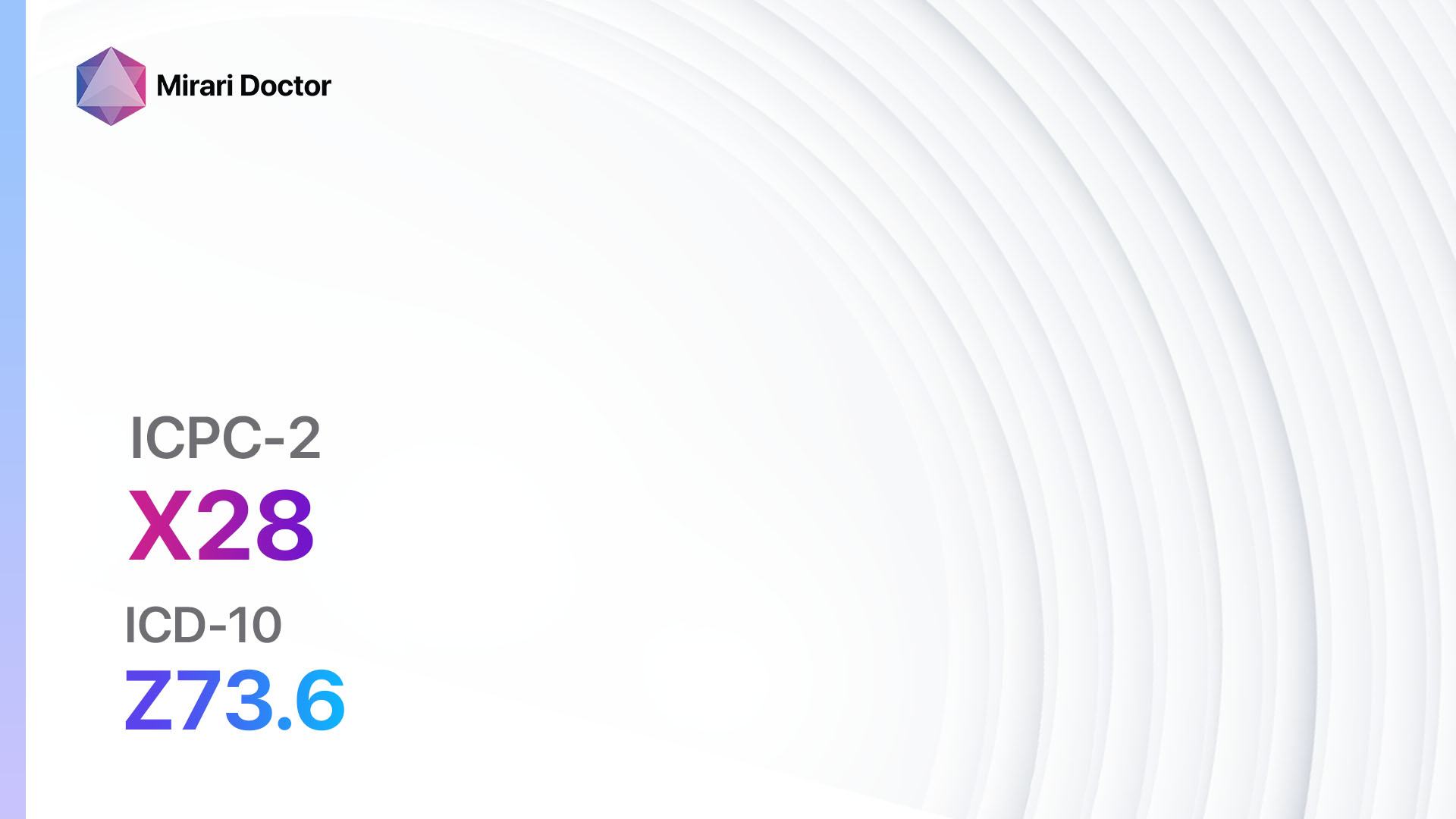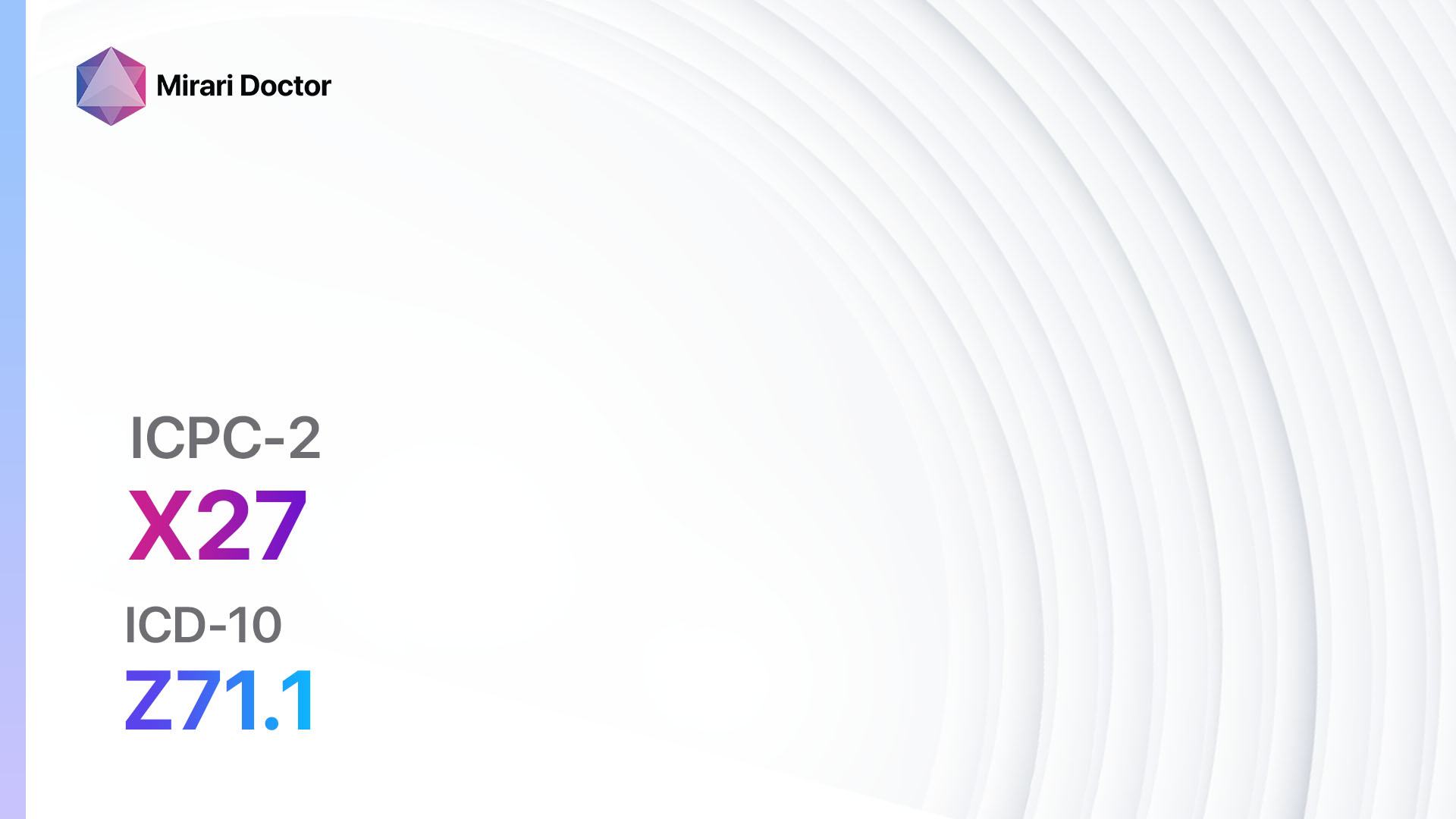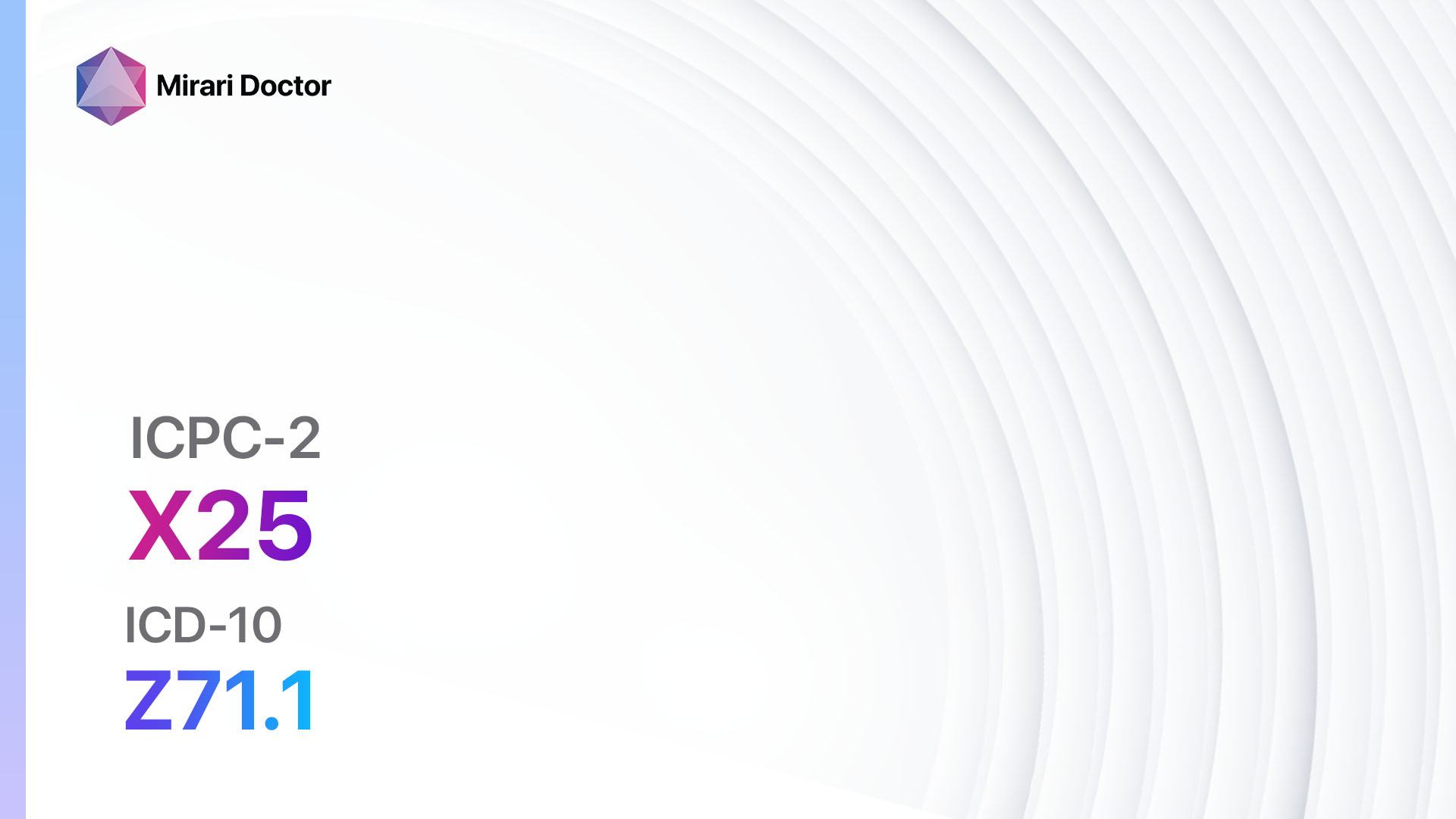
Introduction
Fear of genital cancer in females is a common concern that can cause significant distress and anxiety[1][2]. This guide aims to provide healthcare professionals with a comprehensive approach to diagnosing and managing this fear. By addressing the symptoms, causes, and diagnostic steps, as well as possible interventions, healthcare professionals can effectively support patients in overcoming their fear and promoting their overall well-being[3].
Codes
- ICPC-2 Code: X25 Fear of genital cancer female[4]
- ICD-10 Code: Z71.1 Person with feared complaint in whom no diagnosis is made[5]
Symptoms
- Fear of developing genital cancer[6]
- Anxiety related to genital health[7]
- Excessive worry about symptoms or changes in the genital area[8]
Causes
- Personal or family history of genital cancer[9]
- Exposure to risk factors such as smoking, HPV infection, or a weakened immune system[10]
- Lack of knowledge or understanding about genital health and cancer
Diagnostic Steps
Medical History
- Gather information about the patient’s personal and family history of genital cancer
- Assess for risk factors such as smoking, HPV infection, or immunocompromised conditions
- Inquire about any previous experiences or concerns related to genital health
Physical Examination
- Perform a thorough physical examination of the genital area
- Look for any visible abnormalities or signs of infection
- Assess for any physical symptoms that may be contributing to the patient’s fear
Laboratory Tests
- Pap smear: A screening test to detect abnormal cells in the cervix
- HPV DNA test: Detects the presence of high-risk HPV strains that may increase the risk of genital cancer
- Blood tests: May be done to assess overall health and rule out other conditions
Diagnostic Imaging
- Transvaginal ultrasound: Uses sound waves to create images of the reproductive organs
- MRI or CT scan: Provides detailed images of the pelvic area to assess for any abnormalities
Other Tests
- Colposcopy: A procedure that uses a special magnifying device to examine the cervix, vagina, and vulva for any abnormalities
- Biopsy: Removal of a small tissue sample for laboratory analysis to confirm or rule out cancerous changes
Follow-up and Patient Education
- Provide reassurance and support to the patient
- Offer education about genital health, risk factors, and prevention strategies
- Schedule regular follow-up appointments to monitor the patient’s concerns and provide ongoing support
Possible Interventions
Traditional Interventions
Medications:
Top 5 drugs for Fear of Genital Cancer Female:
- Selective serotonin reuptake inhibitors (SSRIs) (e.g., Fluoxetine, Sertraline):
- Cost: Generic versions can be $10-$50/month.
- Contraindications: Hypersensitivity to SSRIs, concurrent use of MAO inhibitors.
- Side effects: Nausea, headache, insomnia.
- Severe side effects: Serotonin syndrome, suicidal thoughts.
- Drug interactions: MAO inhibitors, NSAIDs, St. John’s wort.
- Warning: Monitor for changes in mood or behavior.
- Benzodiazepines (e.g., Alprazolam, Lorazepam):
- Cost: Generic versions can be $10-$30/month.
- Contraindications: Acute narrow-angle glaucoma, concurrent use of opioids.
- Side effects: Drowsiness, dizziness, confusion.
- Severe side effects: Respiratory depression, dependence.
- Drug interactions: Opioids, alcohol, other CNS depressants.
- Warning: Risk of dependence and withdrawal symptoms.
- Beta-blockers (e.g., Propranolol, Atenolol):
- Cost: Generic versions can be $10-$30/month.
- Contraindications: Severe bradycardia, heart block.
- Side effects: Fatigue, dizziness, bradycardia.
- Severe side effects: Bronchospasm, heart failure.
- Drug interactions: Calcium channel blockers, insulin.
- Warning: Should not be abruptly stopped.
- Antidepressants (e.g., Amitriptyline, Venlafaxine):
- Cost: Generic versions can be $10-$50/month.
- Contraindications: Concurrent use of MAO inhibitors, recent myocardial infarction.
- Side effects: Dry mouth, constipation, sedation.
- Severe side effects: Serotonin syndrome, suicidal thoughts.
- Drug interactions: MAO inhibitors, NSAIDs, St. John’s wort.
- Warning: Monitor for changes in mood or behavior.
- Cognitive-behavioral therapy (CBT):
- Cost: Varies depending on the therapist and location.
- Contraindications: None.
- Side effects: None.
- Severe side effects: None.
- Drug interactions: None.
- Warning: None.
Alternative Drugs:
- Anxiolytics (e.g., Buspirone): Non-benzodiazepine anxiolytic medication.
- Antipsychotics (e.g., Quetiapine): May be used in cases of severe anxiety or associated psychiatric symptoms.
- Herbal supplements (e.g., Valerian root, Passionflower): Some herbal supplements may have calming effects, but their efficacy is not well-established.
- Hormone replacement therapy (HRT): May be considered in postmenopausal women to alleviate anxiety symptoms associated with hormonal changes.
Surgical Procedures:
- None indicated for fear of genital cancer. However, if cancer is diagnosed, appropriate surgical interventions will be determined based on the specific type and stage of cancer.
Alternative Interventions
- Counseling or therapy: Individual or group therapy sessions to address and manage fear and anxiety related to genital health. Cost: $50-$200 per session.
- Mindfulness-based stress reduction (MBSR): A structured program that combines mindfulness meditation, yoga, and body awareness to reduce stress and anxiety. Cost: $200-$500 for an 8-week program.
- Support groups: Joining a support group with individuals who have experienced or are experiencing similar fears can provide emotional support and coping strategies. Cost: Varies, some groups may be free or have a small fee.
- Relaxation techniques: Learning and practicing relaxation techniques such as deep breathing, progressive muscle relaxation, or guided imagery can help reduce anxiety. Cost: Free or minimal cost for instructional materials or classes.
- Self-help resources: Books, online resources, and mobile applications focused on anxiety management and coping strategies can be utilized. Cost: Varies, some resources may be free or require a one-time purchase.
Lifestyle Interventions
- Regular exercise: Engaging in physical activity can help reduce anxiety and promote overall well-being. Cost: Varies, depending on the chosen activity (e.g., gym membership, fitness classes).
- Healthy diet: Consuming a balanced diet rich in fruits, vegetables, whole grains, and lean proteins can support overall health and well-being. Cost: Varies, depending on individual food choices and dietary preferences.
- Stress management techniques: Practicing stress management techniques such as meditation, deep breathing exercises, or journaling can help reduce anxiety. Cost: Free or minimal cost for instructional materials or classes.
- Sleep hygiene: Establishing a regular sleep routine and creating a conducive sleep environment can improve overall sleep quality and reduce anxiety. Cost: Free or minimal cost for adjustments to sleep environment.
- Avoidance of tobacco and excessive alcohol: Eliminating or reducing tobacco and alcohol consumption can improve overall health and well-being. Cost: Varies, depending on individual habits and preferences.
It is important to note that the cost ranges provided are approximate and may vary depending on the location and availability of the interventions. Healthcare professionals should consider individual patient preferences, financial constraints, and local resources when recommending interventions.
Mirari Cold Plasma Alternative Intervention
Understanding Mirari Cold Plasma
- Safe and Non-Invasive Treatment: Mirari Cold Plasma is a safe and non-invasive treatment option for various skin conditions. It does not require incisions, minimizing the risk of scarring, bleeding, or tissue damage.
- Efficient Extraction of Foreign Bodies: Mirari Cold Plasma facilitates the removal of foreign bodies from the skin by degrading and dissociating organic matter, allowing easier access and extraction.
- Pain Reduction and Comfort: Mirari Cold Plasma has a local analgesic effect, providing pain relief during the treatment, making it more comfortable for the patient.
- Reduced Risk of Infection: Mirari Cold Plasma has antimicrobial properties, effectively killing bacteria and reducing the risk of infection.
- Accelerated Healing and Minimal Scarring: Mirari Cold Plasma stimulates wound healing and tissue regeneration, reducing healing time and minimizing the formation of scars.
Mirari Cold Plasma Prescription
Video instructions for using Mirari Cold Plasma Device – X25 Fear of genital cancer female (ICD-10:Z71.1)
| Mild | Moderate | Severe |
| Mode setting: 1 (Infection) Location: 0 (Localized) Morning: 15 minutes, Evening: 15 minutes |
Mode setting: 1 (Infection) Location: 0 (Localized) Morning: 30 minutes, Lunch: 30 minutes, Evening: 30 minutes |
Mode setting: 1 (Infection) Location: 0 (Localized) Morning: 30 minutes, Lunch: 30 minutes, Evening: 30 minutes |
| Mode setting: 2 (Wound Healing) Location: 0 (Localized) Morning: 15 minutes, Evening: 15 minutes |
Mode setting: 2 (Wound Healing) Location: 0 (Localized) Morning: 30 minutes, Lunch: 30 minutes, Evening: 30 minutes |
Mode setting: 2 (Wound Healing) Location: 0 (Localized) Morning: 30 minutes, Lunch: 30 minutes, Evening: 30 minutes |
| Mode setting: 7 (Immunotherapy) Location: 1 (Sacrum) Morning: 15 minutes, Evening: 15 minutes |
Mode setting: 7 (Immunotherapy) Location: 1 (Sacrum) Morning: 30 minutes, Lunch: 30 minutes, Evening: 30 minutes |
Mode setting: 7 (Immunotherapy) Location: 1 (Sacrum) Morning: 30 minutes, Lunch: 30 minutes, Evening: 30 minutes |
| Mode setting: 7 (Immunotherapy) Location: 1 (Sacrum) Morning: 15 minutes, Evening: 15 minutes |
Mode setting: 7 (Immunotherapy) Location: 1 (Sacrum) Morning: 30 minutes, Lunch: 30 minutes, Evening: 30 minutes |
Mode setting: 7 (Immunotherapy) Location: 1 (Sacrum) Morning: 30 minutes, Lunch: 30 minutes, Evening: 30 minutes |
| Total Morning: 60 minutes approx. $10 USD, Evening: 60 minutes approx. $10 USD |
Total Morning: 120 minutes approx. $20 USD, Lunch: 120 minutes approx. $20 USD, Evening: 120 minutes approx. $20 USD, |
Total Morning: 120 minutes approx. $20 USD, Lunch: 120 minutes approx. $20 USD, Evening: 120 minutes approx. $20 USD, |
| Usual treatment for 7-60 days approx. $140 USD – $1200 USD | Usual treatment for 6-8 weeks approx. $2,520 USD – $3,360 USD |
Usual treatment for 3-6 months approx. $5,400 USD – $10,800 USD
|
 |
|
Use the Mirari Cold Plasma device to treat Fear of genital cancer female effectively.
WARNING: MIRARI COLD PLASMA IS DESIGNED FOR THE HUMAN BODY WITHOUT ANY ARTIFICIAL OR THIRD PARTY PRODUCTS. USE OF OTHER PRODUCTS IN COMBINATION WITH MIRARI COLD PLASMA MAY CAUSE UNPREDICTABLE EFFECTS, HARM OR INJURY. PLEASE CONSULT A MEDICAL PROFESSIONAL BEFORE COMBINING ANY OTHER PRODUCTS WITH USE OF MIRARI.
Step 1: Cleanse the Skin
- Start by cleaning the affected area of the skin with a gentle cleanser or mild soap and water. Gently pat the area dry with a clean towel.
Step 2: Prepare the Mirari Cold Plasma device
- Ensure that the Mirari Cold Plasma device is fully charged or has fresh batteries as per the manufacturer’s instructions. Make sure the device is clean and in good working condition.
- Switch on the Mirari device using the power button or by following the specific instructions provided with the device.
- Some Mirari devices may have adjustable settings for intensity or treatment duration. Follow the manufacturer’s instructions to select the appropriate settings based on your needs and the recommended guidelines.
Step 3: Apply the Device
- Place the Mirari device in direct contact with the affected area of the skin. Gently glide or hold the device over the skin surface, ensuring even coverage of the area experiencing.
- Slowly move the Mirari device in a circular motion or follow a specific pattern as indicated in the user manual. This helps ensure thorough treatment coverage.
Step 4: Monitor and Assess:
- Keep track of your progress and evaluate the effectiveness of the Mirari device in managing your Fear of genital cancer female. If you have any concerns or notice any adverse reactions, consult with your health care professional.
Note
This guide is for informational purposes only and should not replace the advice of a medical professional. Always consult with your healthcare provider or a qualified medical professional for personal advice, diagnosis, or treatment. Do not solely rely on the information presented here for decisions about your health. Use of this information is at your own risk. The authors of this guide, nor any associated entities or platforms, are not responsible for any potential adverse effects or outcomes based on the content.
Mirari Cold Plasma System Disclaimer
- Purpose: The Mirari Cold Plasma System is a Class 2 medical device designed for use by trained healthcare professionals. It is registered for use in Thailand and Vietnam. It is not intended for use outside of these locations.
- Informational Use: The content and information provided with the device are for educational and informational purposes only. They are not a substitute for professional medical advice or care.
- Variable Outcomes: While the device is approved for specific uses, individual outcomes can differ. We do not assert or guarantee specific medical outcomes.
- Consultation: Prior to utilizing the device or making decisions based on its content, it is essential to consult with a Certified Mirari Tele-Therapist and your medical healthcare provider regarding specific protocols.
- Liability: By using this device, users are acknowledging and accepting all potential risks. Neither the manufacturer nor the distributor will be held accountable for any adverse reactions, injuries, or damages stemming from its use.
- Geographical Availability: This device has received approval for designated purposes by the Thai and Vietnam FDA. As of now, outside of Thailand and Vietnam, the Mirari Cold Plasma System is not available for purchase or use.
References
- Pereira Gray, D. (2020). The ‘worried well’. British Journal of General Practice, 70(692), 126. https://doi.org/10.3399/bjgp20X708341
- Aaltonen, P. (2020). The worried well in the time of COVID-19. Nursing Inquiry, 27(3), e12373. https://doi.org/10.1111/nin.12373
- Garfield, S. (1970). The delivery of medical care. Scientific American, 222(4), 15-23. https://doi.org/10.1038/scientificamerican0470-15
- WONCA International Classification Committee. (2015). International Classification of Primary Care (ICPC-2-R). https://www.globalfamilydoctor.com/site/DefaultSite/filesystem/documents/Groups/WICC/International%20Classification%20of%20Primary%20Care%20Dec16.pdf
- World Health Organization. (2019). ICD-10 Version:2019. https://icd.who.int/browse10/2019/en#/Z71.1
- Sekse, R. J. T., Hufthammer, K. O., & Vika, M. E. (2017). Fatigue and quality of life in women treated for various types of gynaecological cancers: a cross-sectional study. Journal of Clinical Nursing, 26(3-4), 546-555. https://doi.org/10.1111/jocn.13472
- Beesley, V. L., Price, M. A., & Webb, P. M. (2011). Loss of lifestyle: health behaviour and weight changes after becoming a caregiver of a family member diagnosed with ovarian cancer. Supportive Care in Cancer, 19(12), 1949-1956. https://doi.org/10.1007/s00520-010-1035-2
- Lerman, C., Daly, M., Walsh, W. P., Resch, N., Seay, J., Barsevick, A., Birenbaum, L., Heggan, T., & Martin, G. (1993). Communication between patients with breast cancer and health care providers. Determinants and implications. Cancer, 72(9), 2612-2620. https://doi.org/10.1002/1097-0142(19931101)72:9<2612::aid-cncr2820720916>3.0.co;2-f
- Rees, C. E., & Bath, P. A. (2000). The information needs and source preferences of women with breast cancer and their family members: a review of the literature published between 1988 and 1998. Journal of Advanced Nursing, 31(4), 833-841. https://doi.org/10.1046/j.1365-2648.2000.01341.x
- Katz, D., Kopek, N., Waldron, J., Devins, G. M., & Tomlinson, G. (2004). Screening for depression in head and neck cancer. Psycho-Oncology, 13(4), 269-280. https://doi.org/10.1002/pon.734
Related articles
Made in USA


